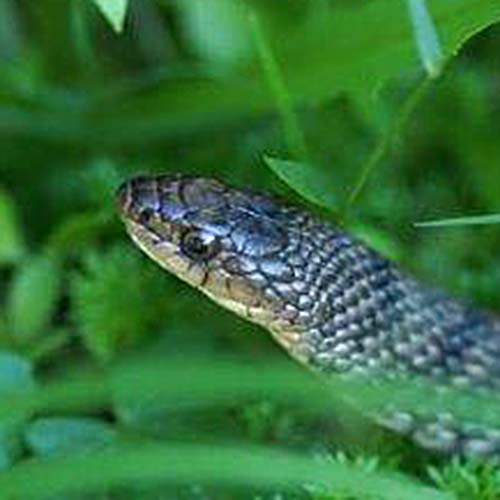Keelback Snake
Tropidonophis mairii
Non-Venomous
Other common names: Freshwater Snake, Water Snake, Swamp Tiger Significance to Humans: Non-Venomous

Significance to Humans
Non-Venomous
The Keelback while reluctant to bite, will if handled firmly. it can also emit a strong odour from the cloaca while being handled. Generally strikes with mouth closed.
General Description
Variable colouring, but it typically exhibits various shades of grey, brown, or olive with irregular, broken cross-bands or flecks of darker brown and paler creamy colours. Its belly surfaces are cream or pale rusty in colour, accentuated by dark scale edges. One of its distinctive features is the presence of raised longitudinal ridges or ‘keels’ on each scale, giving the snake an appearance of parallel ridges running along the length of its body. A key characteristic that helps differentiate it from the highly venomous Rough-scaled Snake (Tropidechis carinatus) is the Keelback’s possession of a loreal scale and more pronounced scale keeling. Midbody scales at 15 (rarely 17) rows.
Average Length
Typically measures around 60cm in length, although larger specimens reaching up to 80cm have been recorded.
Habitat in SE Qld
Commonly found in moist localities within both wet and dry forest environments of Southeast Queensland. It thrives along riparian margins and drainage lines, often extending its habitat into farmland and suburban areas.
General habits
The Keelback snake is often associated with wetland and riparian areas, but it is also adaptable enough to persist in moist suburban backyards and parks.
Diet
Diet consists is primarily of frogs and lizards, occasionally including fish and tadpoles. Notably, the Keelback snake has gained attention for its ability to consume the introduced Cane Toad, although it typically targets smaller toads and their tadpoles.
Local distribution
The Keelback snake can be found throughout moist suburbs or areas where creeks and drainage lines, whether natural or man-made, persist. It is especially abundant in suitable localities, particularly in the vicinity of marshes or dam habitats.
Around the home
In its foraging behavior, the Keelback snake seeks shelter beneath low vegetation, logs, woodpiles, water features, and other moist areas where potential prey may be found. There have also been observations of this snake exploiting small fish in constructed backyard ponds.

